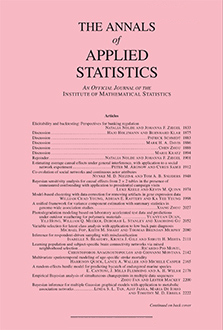Abstract
In various fields, data recorded continuously during a time interval and curve data, such as spectral data, become common. These kinds of data can be interpreted as functional data. In this paper we have studied binary classification from only positive and unlabeled functional data (PU classification for functional data). Our first contribution is to present a simple classification algorithm for this problem. The key feature of the algorithm is that it is not required an estimation of the unknown class prior (or the constant probability that a positive object is labeled). It is worth noting that the idea of our method can be applied to kernel linear discriminant analysis for general data. Our second contribution is to prove that, under mild regularity conditions similar to those in a supervised context, the proposed algorithm can achieve perfect asymptotic classification in the context of PU classification. In fact, we show that the proposed algorithm works well not only in numerical experiments but also for real data examples. Moreover, as an important practical application, we have used the proposed algorithm to identify handball players at risk for anterior cruciate ligament (ACL) injury based on ground reaction force data.
Citation
Yoshikazu Terada. Issei Ogasawara. Ken Nakata. "Classification from only positive and unlabeled functional data." Ann. Appl. Stat. 14 (4) 1724 - 1742, December 2020. https://doi.org/10.1214/20-AOAS1404
Information





